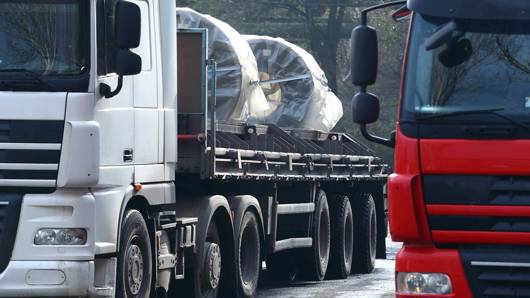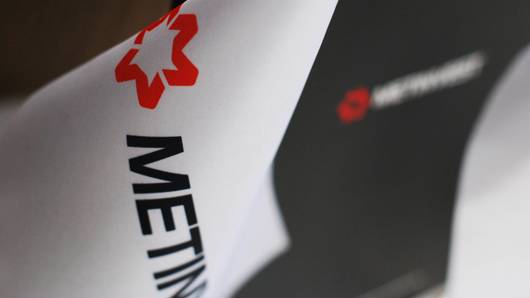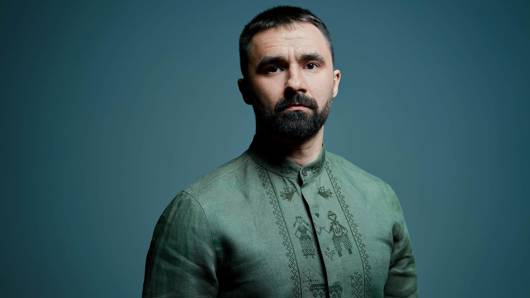Journalists from Dagens Nyheter, Sweden’s largest daily newspaper, visited Zaporizhstal to see how the plant is managing to manufacture products, including defence ones, near the front line under shelling; has adapted to power cuts and spare-part shortages; and is contributing to Ukraine’s victory. Below is an adapted version of the original article.
Metallurgy and heavy industry are the backbone of Ukraine’s economy, particularly in war conditions. At present, however, there is a shortage of workers, who are needed at the front. While the steel plant in Zaporizhzhia has lost 20% of its workers, it continues to smelt steel under artillery shelling.
Zaporizhstal’s blast furnaces have been stopped twice in its history: during World War II, when the Germans occupied Zaporizhzhia; and in 2022, when Russian troops were stationed a few kilometres away from the city.
Background. The metallurgical industry is associated with mines
In Ukraine, much of the heavy industry is concentrated in the eastern and southeastern parts of the country. This is because it was formed around mines, particularly coal ones in the Donbas, which provided industry with energy during the Soviet Union. The iron ore quarries outside Kryvyi Rih also played an important role in Zaporizhstal’s location, as they provide it with raw materials.
At present, Zaporizhstal is the largest steelworks in Ukraine, while Ilyich Steel and Azovstal, one of the largest pre-war steel mills, are located in occupied Mariupol.
Owned by Rinat Akhmetov, Metinvest is the largest steel group in Ukraine. It includes Zaporizhstal, Azovstal, several iron ore quarries outside Kryvyi Rih and the Avdiivka Coke plant. Metinvest ranks 42nd among the world’s 50 largest steelmakers.
Rinat Akhmetov, who was born in Donetsk, has been supporting Ukraine since the beginning of the war, which started with the annexation of Crimea by Russia in 2014. Metinvest provides its employees on the front line with personal protective equipment and finances numerous needs of the army.
At present, Zaporizhstal is the largest steelworks in Ukraine, while Ilyich Steel and Azovstal, one of the largest pre-war steel mills, are located in occupied Mariupol.
“I am proud of my work. At this plant, we work for Ukraine.”
Dmytro Blynov pulls a protective shield over his forehead. His face is sooty and sweaty. Pig iron melts at a temperature of 1,538 degrees Celsius. It is quite cosy near Zaporizhstal’s blast furnaces now, like a sauna, even though the production unit where the blast furnace operates has several open walls, and it is 5 degrees below zero outside.
Hours earlier, several Russian missiles hit Zaporizhzhia. While work at the steel plant was halted, this did not apply to the blast furnaces.
Roman Slobodyanyuk, general director of Zaporizhstal, said: “It is impossible to suspend the work of the blast furnace. It will take a month to restart it.”
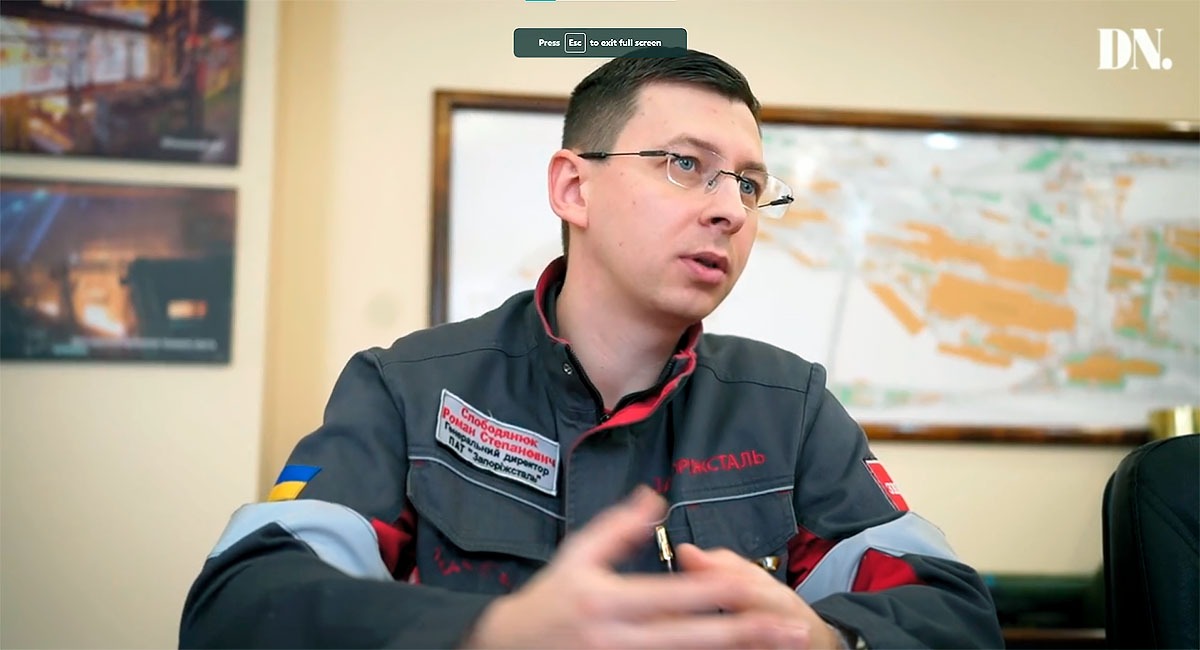
This is just one example of metallurgists in Ukraine who do not leave their workplaces under any circumstances. They are like soldiers on duty.
Before the war, Ukraine was one of the five largest steel producers in Europe. At present, production volumes have decreased. Zaporizhstal, one of the country’s largest steel plants and founded in 1933, has halved its production.
When the war started, we had to completely stop the work of the steel plant. For the first time since World War II, when we were occupied by the Nazis. We were forced to because Russian troops were stationed just a few kilometres away from Zaporizhzhia.
— Roman SlobodyanyukA month later, the situation at the front stabilised. Initially, steel production resumed at two blast furnaces out of four. Now, three of them are working. Capacity is slowly but surely growing, which is vital for a country that relies on its heavy industry. It is now the backbone of the Ukrainian economy, struggling to survive under war conditions.
Some steel is used for domestic defence needs, particularly for the production of bulletproof vests and mine trawls. However, about half of the production is exported, which is almost as important: Ukraine has lost 30% of its GDP since the beginning of the war. As such, around half of Zaporizhstal’s production is sold abroad. Most of it is transported through the recently opened sea corridor.
Production risks are high. The front line lies on the other side of the Dnipro River. Both Zaporizhzhia and the plant are regularly shelled.
Roman Slobodyanyuk noted: “Russian troops are so close that you can see them with binoculars if you go outside the city. We have been shelled for two years now. Consequently, people are leaving the city, and we are short of workers.”
Before the war, around 10,000 people worked at Zaporizhstal. At present, there are only 8,000 left. Some 1,100 workers are fighting at the front, and over 500 employees have moved.
It is almost impossible to find qualified workers in the current situation. While Zaporizhstal is training new people, it takes time.
Roman Slobodyanyuk said: “Metallurgy is a demanding industry: you have to understand what you are doing. Some professions require six months of training, and some five years. We have lost a significant part of the knowledge pool. We are trying to compensate for it, but it is challenging.”
Someone responsible for blast furnaces, like Dmytro Blynov, whom we met at the plant, has to master the profession in five years. And it takes six months to learn how to perform the simplest operations.
Dmytro Blynov said: “It’s a difficult profession, not everyone can work here. And it’s tough, especially in summer, when it’s very hot in the workshop.”
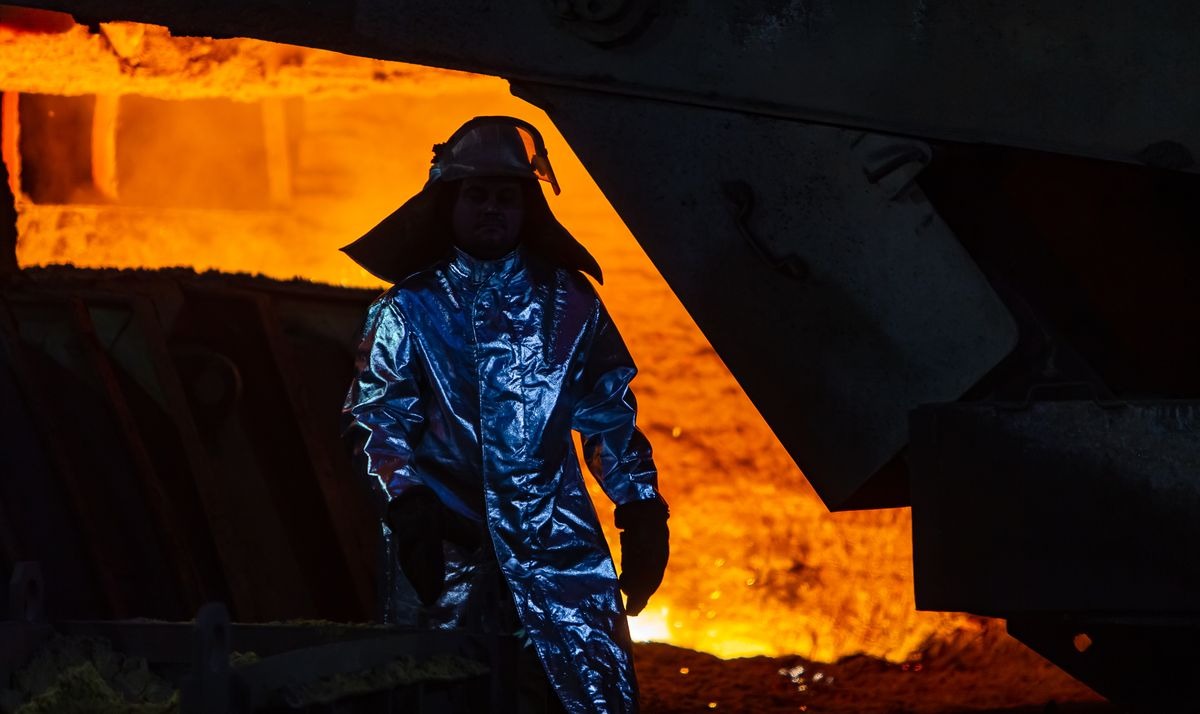
From the large blast furnace behind his back, a rain of sparks brightly illuminates the dark factory shop. Liquid pig iron with a high carbon dioxide content flows out of the blast furnaces.
Many colleagues of Dmytro Blynov and his co-worker Kyrylo Jukalov are fighting at the front. Resilient industrial workers, accustomed to discipline and harsh working conditions, are desirable fighters. Meanwhile, the industry is declining without workers. As a result, 10% of Zaporizhstal workers are currently at the front.
Both Jukalov and his colleague Dmytro believe that they are serving their country by keeping the blast furnace running.
Kyrylo said: “The country needs steel.”
Dmytro adds: “And tax revenues.”
Many fighters from the mining industry have also been mobilised to the front. Just over 20 kilometres from Zaporizhzhia, outside President Zelensky’s hometown of Kryvyi Rih, is one of Europe’s largest iron ore deposits. From there, Zaporizhstal receives its raw material, enriched iron ore.
Since the beginning of the war, mining volumes have decreased significantly. However, ore mining continues uninterrupted, despite regular shelling of Kryvyi Rih.
820 of our workers are at the front, while 26 have been killed, around 20 are in captivity and 20 are missing.
— Mykhailo Tsurkan, personnel director at Ingulets Mine and Processing PlantBefore 24 February 2022, the plant employed 4,500 people. Now, there are 2,400 left.
Ihor Tolkachev said: “We are short of workers; there are many people at war. Often, one person has to perform the work for two people. We have much more work during each shift because there are very few of us.” He works as a supervisor at the processing plant located next to the quarry.
The iron ore is enriched here by grinding it in large mills into particles smaller than one millimetre in diameter. They are separated, sent to the mill for a second time and separated once more to remove the slag. After the procedure is repeated a third time, the concentrate is filtered and transported by train to the blast furnaces in Zaporizhzhia. There, it is smelted into pig iron, which can be sold or processed into steel.
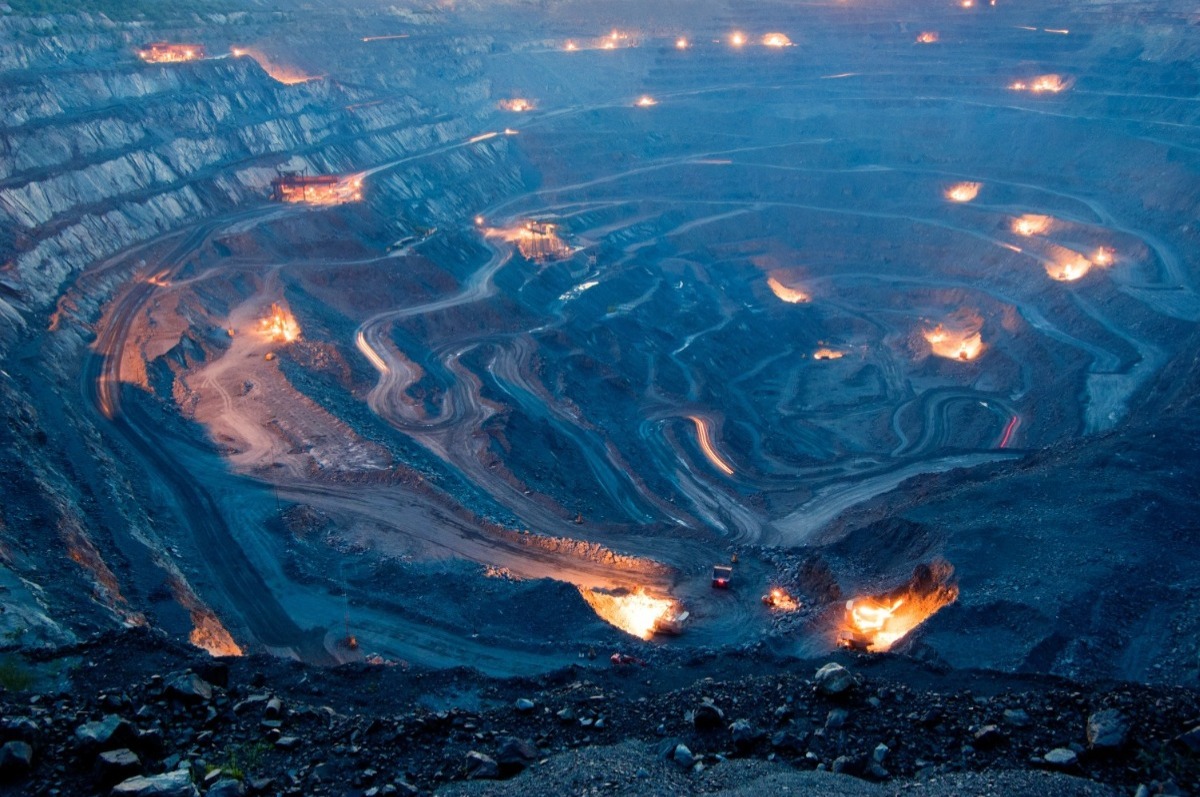
There is a lot of noise at the plant when the large mills are running. I interview Ihor and his colleague Andriy Sundeyev in a poorly soundproofed office next to the plant.
Andriy Sundeyev, a chief engineer, said: “Either you go to war, or stay at your post. It so happened that we were almost in the middle of a war zone, so it was not easy.”
Kryvyi Rih became much more peaceful after the Ukrainian army managed to push Russian troops to the other side of the Dnipro River. But the situation is far from normal.
Oleksandr Herasymchuk, general director of Ingulets GOK, said: “We have logistical problems. We used to export all our products via the Black Sea, but the Russians blocked this route. A new route in the western part of the Black Sea has now been opened, and we can use it. However, it is very expensive. Before each delivery, we have to make calculations to understand whether it is worth doing it.”
Another concern is access to electricity.
Oleksandr Herasymchuk said: “We get electricity from coal-fired power plants in the region. At present, we have enough electricity, but we cannot increase production.”
The third issue is spare parts. The enterprise used to obtain spare parts for repairing trucks and equipment from Russia and Belarus. Those countries are now enemies of Ukraine.
Oleksandr Herasymchuk said: “I have a fleet of trucks that require spare parts. After 2014 (when Russia annexed Crimea), we stopped importing spare parts from Russia. Instead, we started producing them in Kramatorsk. But now the factory in Kramatorsk is not working either because the front line is very close.”

When Herasymchuk says “we”, he means not only his enterprise. The GOK near Kryvyi Rih and the steel plant in Zaporizhzhia report to Metinvest. The Group also owns the Mariupol-based Azovstal plant, which became world-famous in spring 2022, when the Ukrainian Azov battalion hid in its underground tunnels and resisted Russian bombardment for several weeks. At present, Mariupol and Azovstal are occupied by Russia.
The civilian part of Metinvest’s production generates the most revenues. One of Zaporizhstal’s main products is cold-rolled sheet used in the automotive industry. However, production is hampered by constant artillery shelling.
Oleksandr Skrypnyk said: “When an air raid warning is announced, we stop all rolling mills and go to the bomb shelter. Every hour of idle rolls causes considerable losses for the plant.” He works as the head of the shop for cold-rolled sheet production at Zaporizhstal.
According to Oleksandr Skrypnyk, the worst part about bombings is that people become used to them. He adds: “Everyone starts to take it for granted. Even my seven-year-old son. He says that everything is fine, and it wasn’t that bad. I’m proud of him, but getting used to it is not good for him.”
– Are you planning to move?
– No, we aren’t.
– Why not?
– Because this is home.






